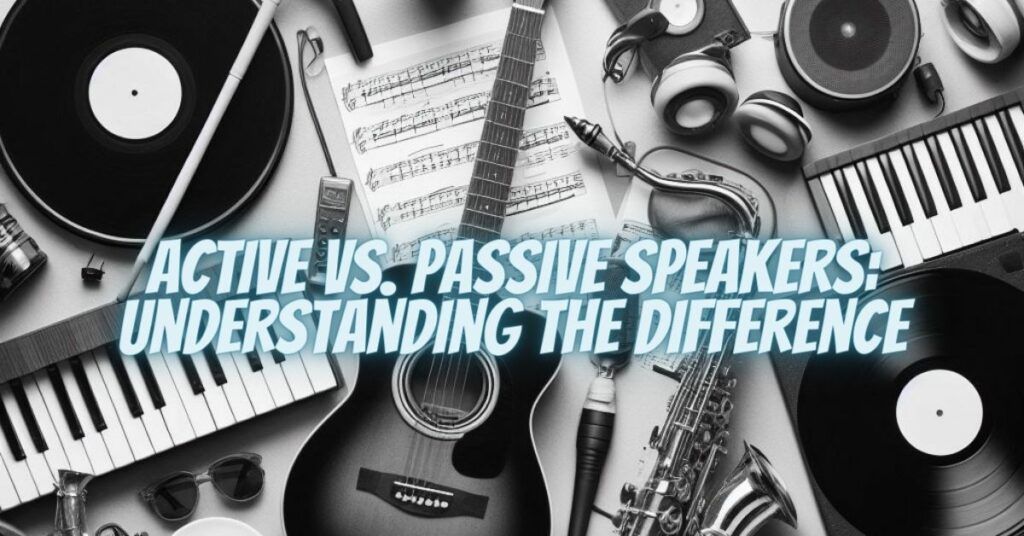Active speakers and passive speakers are two different types of speakers that have different advantages and disadvantages. Active speakers have built-in amplifiers, while passive speakers require an external amplifier.
In general, active speakers are better than passive speakers because they offer a number of advantages, including:
- Superior sound quality: Active speakers are typically designed to work together as a system, with the amplifier and speaker drivers being matched specifically for each other. This results in better sound quality, with more accurate bass response and less distortion.
- Easier setup: Active speakers are much easier to set up than passive speakers, because you only need to connect them to your audio source. With passive speakers, you also need to connect an external amplifier, which can be a complex process, especially if you are not familiar with audio equipment.
- More features: Active speakers often come with a variety of features that are not available on passive speakers, such as built-in Bluetooth, Wi-Fi, and EQ controls. These features can make it easier to use and enjoy your speakers.
- More portable: Active speakers are often more portable than passive speakers, because they are smaller and lighter. This makes them ideal for use in small spaces or for taking with you on the go.
However, active speakers do have a few disadvantages, including:
- Higher cost: Active speakers are typically more expensive than passive speakers.
- Less flexibility: If you want to upgrade your system, you will need to replace the entire speaker system. With passive speakers, you can upgrade the amplifier or speaker drivers independently.
Overall, active speakers offer a number of advantages over passive speakers, including superior sound quality, easier setup, more features, and more portability. However, they are also more expensive and less flexible.
Here is a more detailed comparison of active and passive speakers in terms of their key features and benefits:
| Feature | Active speakers | Passive speakers |
|---|---|---|
| Sound quality | Typically superior, due to the matched amplifier and speaker drivers | Can be excellent, but depends on the quality of the amplifier and speaker drivers |
| Setup | Very easy, just connect to audio source | More complex, requires connecting an external amplifier |
| Features | Often have built-in Bluetooth, Wi-Fi, EQ controls, etc. | May have some features, such as EQ controls, but not as many as active speakers |
| Portability | Typically more portable, due to smaller size and weight | Can be portable, but depends on the size and weight of the speakers and amplifier |
| Cost | Typically more expensive | Typically less expensive |
| Flexibility | Less flexible, as you need to replace the entire speaker system to upgrade | More flexible, as you can upgrade the amplifier or speaker drivers independently |
Which type of speaker is right for you?
If you are looking for the best possible sound quality and ease of use, then active speakers are the way to go. However, if you are on a budget or need more flexibility, then passive speakers may be a better option.
Here are some specific examples of when you might want to choose active speakers:
- If you are looking for a home theater system, active speakers are a good option because they offer superior sound quality and ease of setup.
- If you are looking for speakers for a small space, such as a desktop or bookshelf, active speakers are a good option because they are typically more portable and compact.
- If you are looking for speakers for a portable music system, such as a Bluetooth speaker, active speakers are a good option because they are lightweight and have built-in batteries.
Here are some specific examples of when you might want to choose passive speakers:
- If you are on a budget, passive speakers are typically less expensive than active speakers.
- If you are an audio enthusiast and want the flexibility to mix and match different components, passive speakers are a better option.
- If you already have an external amplifier that you are happy with, then passive speakers are a good option because you can use your existing amplifier.
Ultimately, the best way to decide which type of speaker is right for you is to consider your budget, needs, and preferences.

